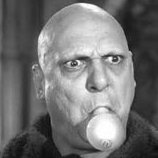Thanks Crossy
-
Recently Browsing 0 members
- No registered users viewing this page.
-
Topics
-
-
Popular Contributors
-
-
Latest posts...
-
650
2025 SSA Form 7162 - "Hello, are you dead yet?" forms.
OK, I jumped the gun a bit. I was listing what the FBU does in addition to pre-suspension. In other words, once things go south, it looks like we have to rely on the FBU... thus not having to contact the US, which I don't want to do if avoidable. -
5
Crime AI Eyes on Crime: Police Capture 402 Suspects
It is just facial recognition using machine learning with, quite old tech, 10 years old at least, however it was expensive to run it before. Today it's faster and cheaper. US has been doing it for a decade already. The "AI Cameras" are not really an AI camera, what they do is sending live stream to a central hardware that processes each frame or group of frames using the already trained models with the suspects images. every time a new suspect image is added to the database they need to retrain to update the model. However there are advanced features that the AI model can do such as detecting suspicious behavior and anomalies. The hardware is expensive, something that can process 10-20 live streams be costing at least 1-2M Baht today. I dont know which models and hardware the local police uses, anyone knows? -
36
How to get that 'zing' back into my aching bones and muscles?
Don't worry, it's all a normal part of the dying process. Quite natural. At 70 I'm (sometimes painfully) aware I'm no longer 60, let alone 50. But fortunately still reasonably active and healthy enough and in a similar physical/medical state to you. Healthy eating and enough exercise can help to stave off the inevitable, to slow it down, statistically at least. However, you are who you are and decline of some sort, at some speed, towards the final outcome, is inevitable. I think it pays to simply embrace it creatively. Look forward to the big sleep. You seem to be leaving something of great value behind in Myanmar. That should make a soft pillow. I sadly have yet to find a larger legacy beyond my immediate personal circle, but got my eyes peeled. -
30
Casting Netflix
18 dollars a month, no ads 2 devices allowed You have to believe this. because why would I lie - after 6 going on 7 days now I CAN NOT CHANGE THE DATE OR TIME ON THE TV IT WON'T ALLOW ME TO NO MATTER WHAT I CLICK ON. I also can't delete the apps, it literally won't let me delete and download again. 7 days, 100% of things tried and still no netflix and now no Youtub e either lol - technician won't speak any english and problem will not be resolved, willing to bet 100 dollars on that Sure, you will think I am joking or just plain stupid, but have you got any idea how many things I have tried in freaking 7 days?? I have been on PC's since the 90's this is beyond belief really -
44
Do you still use tukcom mobile floor
And are you able to register the warranty with Samsung....go on their website and try registering it and let us know if you are successful..... -
36
How to get that 'zing' back into my aching bones and muscles?
Tai chi is excellent for older people. Try it.
-
-
Popular in The Pub



.thumb.jpg.b54783ad387f65d779e04f535fcfeee9.jpg)




.thumb.jpg.3dc6f0f5ac9628b4f4c10ceb7e0794cc.jpg)


Recommended Posts
Create an account or sign in to comment
You need to be a member in order to leave a comment
Create an account
Sign up for a new account in our community. It's easy!
Register a new accountSign in
Already have an account? Sign in here.
Sign In Now